Can Cherry Barbs Eat Brine Shrimp? A Look at Their Favorite Treats
This post may contain affiliate links.
Cherry barbs (Puntius titteya) are among the most beloved freshwater aquarium fish, and understanding their dietary needs is crucial for maintaining their vibrant colors and optimal health. If you’re wondering whether cherry barbs can eat brine shrimp, the answer is a resounding yes – and it’s actually one of their most nutritious and preferred food options.
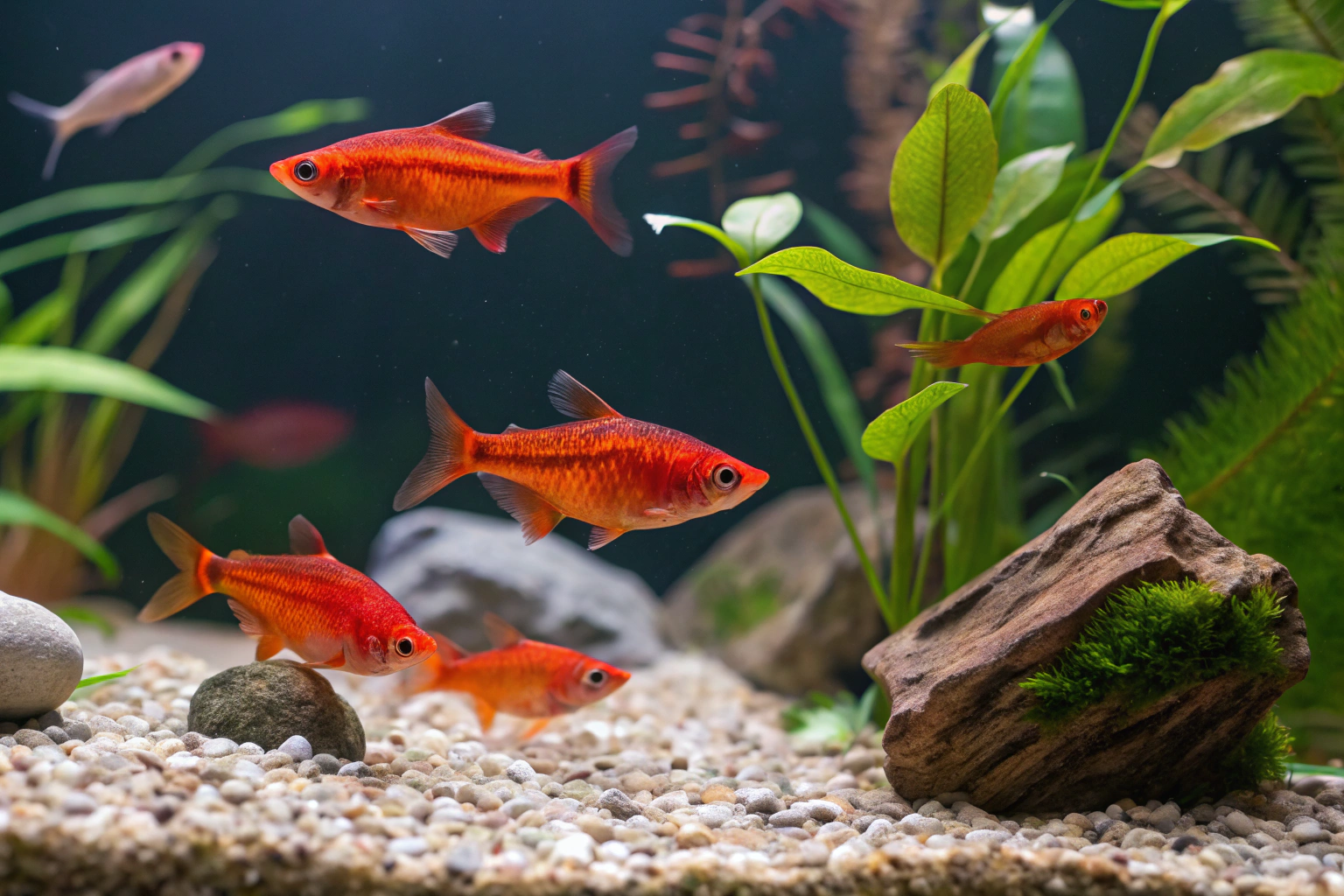
What Are Cherry Barbs and Their Natural Diet?
Cherry barbs are small, peaceful freshwater fish native to Sri Lanka’s hill streams and rivers. In their natural habitat, these omnivorous fish feed on a diverse diet including small insects, larvae, algae, and microscopic organisms. This varied diet is what gives them their characteristic bright red coloration and robust health.
When kept in aquariums, cherry barb feeding habits remain similar to their wild counterparts. They actively forage throughout the water column and substrate, making them excellent community tank inhabitants. Understanding their natural feeding behavior helps us provide the best possible nutrition in captivity.
Brine Shrimp: The Perfect Cherry Barb Food
Brine shrimp for cherry barbs represents one of the most nutritionally complete foods available to aquarium hobbyists. These tiny crustaceans (Artemia salina) are packed with essential proteins, lipids, and carotenoids that enhance fish coloration and promote healthy growth.
Nutritional Benefits of Brine Shrimp
Brine shrimp offer several key advantages for cherry barb nutrition:
- High protein content (50-60%) supports muscle development and growth
- Essential fatty acids promote vibrant coloration and immune system health
- Natural carotenoids enhance the cherry barb’s signature red hues
- Easily digestible proteins reduce waste and maintain water quality
- Natural feeding stimulus triggers hunting instincts and active behavior

How to Feed Brine Shrimp to Cherry Barbs
Live Brine Shrimp vs. Frozen Options
Both live and frozen brine shrimp work excellently for cherry barb diet plans. Live brine shrimp provide maximum nutritional value and stimulate natural hunting behaviors, while frozen options offer convenience and longer storage life.
Live Brine Shrimp Benefits:
- Maximum nutritional density
- Stimulates natural predatory behavior
- Enhances activity levels and coloration
- Can be cultured at home for continuous supply
Frozen Brine Shrimp Advantages:
- Convenient storage and feeding
- Reduced risk of disease transmission
- Consistent availability year-round
- Cost-effective for regular feeding
Feeding Schedule and Portions
For optimal health, cherry barbs should receive brine shrimp 2-3 times per week as part of a varied diet. A good rule of thumb is to offer only what they can consume within 2-3 minutes to prevent overfeeding and maintain water quality.
Recommended feeding schedule:
- Monday, Wednesday, Friday: High-quality flake or pellet food
- Tuesday, Thursday: Brine shrimp (live or frozen)
- Saturday: Bloodworms or other protein-rich treats
- Sunday: Vegetable matter or algae wafers
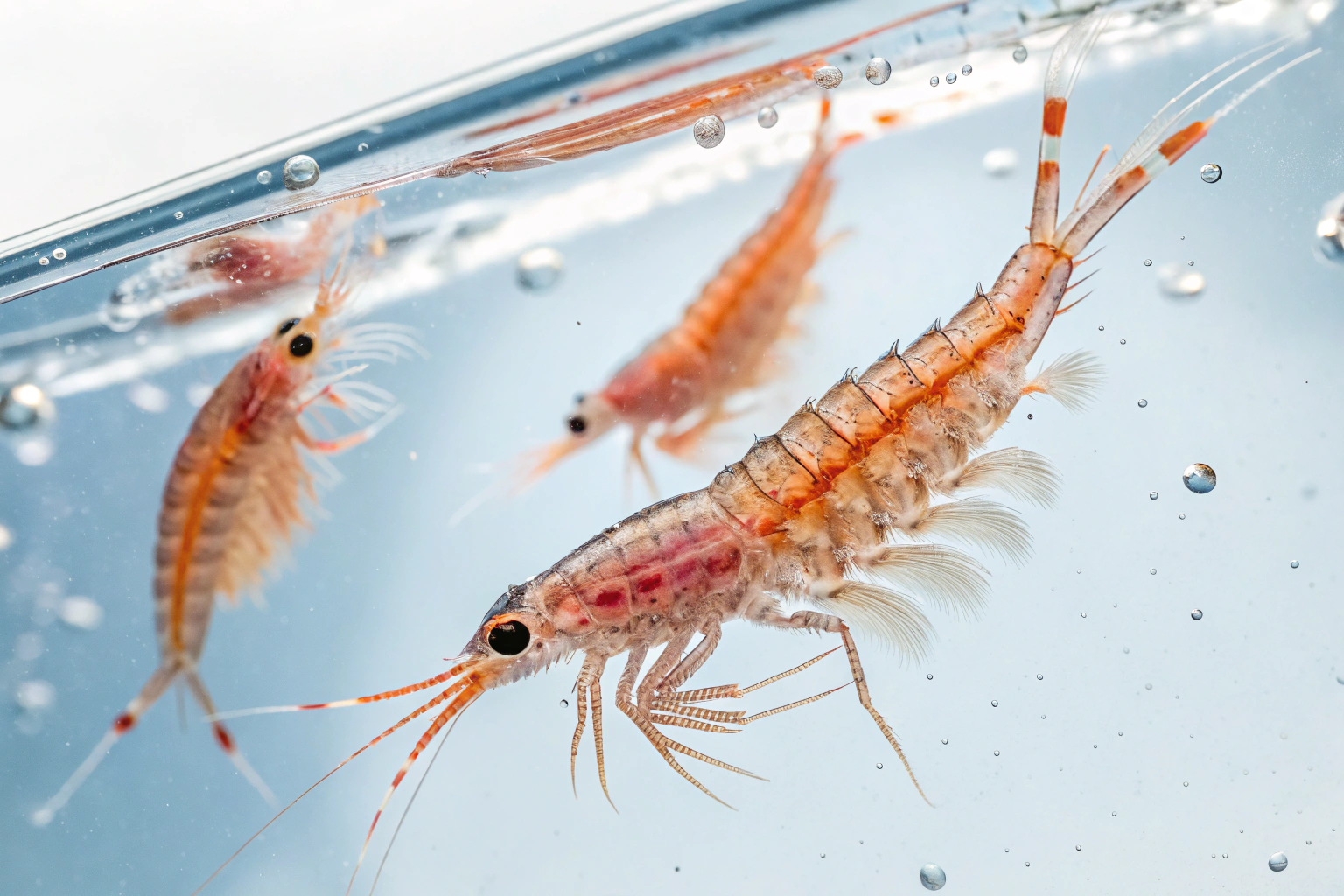
Other Favorite Cherry Barb Treats
While brine shrimp are excellent, cherry barb favorite foods include several other options that contribute to a balanced diet:
Live and Frozen Foods
- Bloodworms: High in protein and irresistible to most cherry barbs
- Daphnia: Excellent for digestive health and natural feeding behavior
- Tubifex worms: Rich in nutrients but should be used sparingly
- Mosquito larvae: Stimulates hunting instincts and provides variety
Commercial Foods
Quality commercial foods form the backbone of any healthy cherry barb diet. Learn more about selecting the best aquarium fish food for optimal nutrition:
- High-quality tropical flakes with natural color enhancers
- Small pellets designed for community fish
- Freeze-dried options like tubifex and bloodworms
- Specialized barb foods with optimal protein-to-fat ratios
Vegetable Matter
Don’t forget that cherry barbs are omnivores! Include plant matter such as:
- Blanched spinach or lettuce leaves
- Spirulina-based foods
- Algae wafers
- Small pieces of cucumber or zucchini
For a complete guide on feeding aquarium fish vegetables, explore our detailed nutritional recommendations.
Signs of Proper Nutrition in Cherry Barbs
When fed a varied diet including brine shrimp, healthy cherry barbs display several key characteristics:
- Vibrant red coloration in males, especially during breeding season
- Active swimming behavior throughout all water levels
- Healthy appetite and competitive feeding behavior
- Proper body condition without bloating or emaciation
- Regular breeding behavior in mature pairs
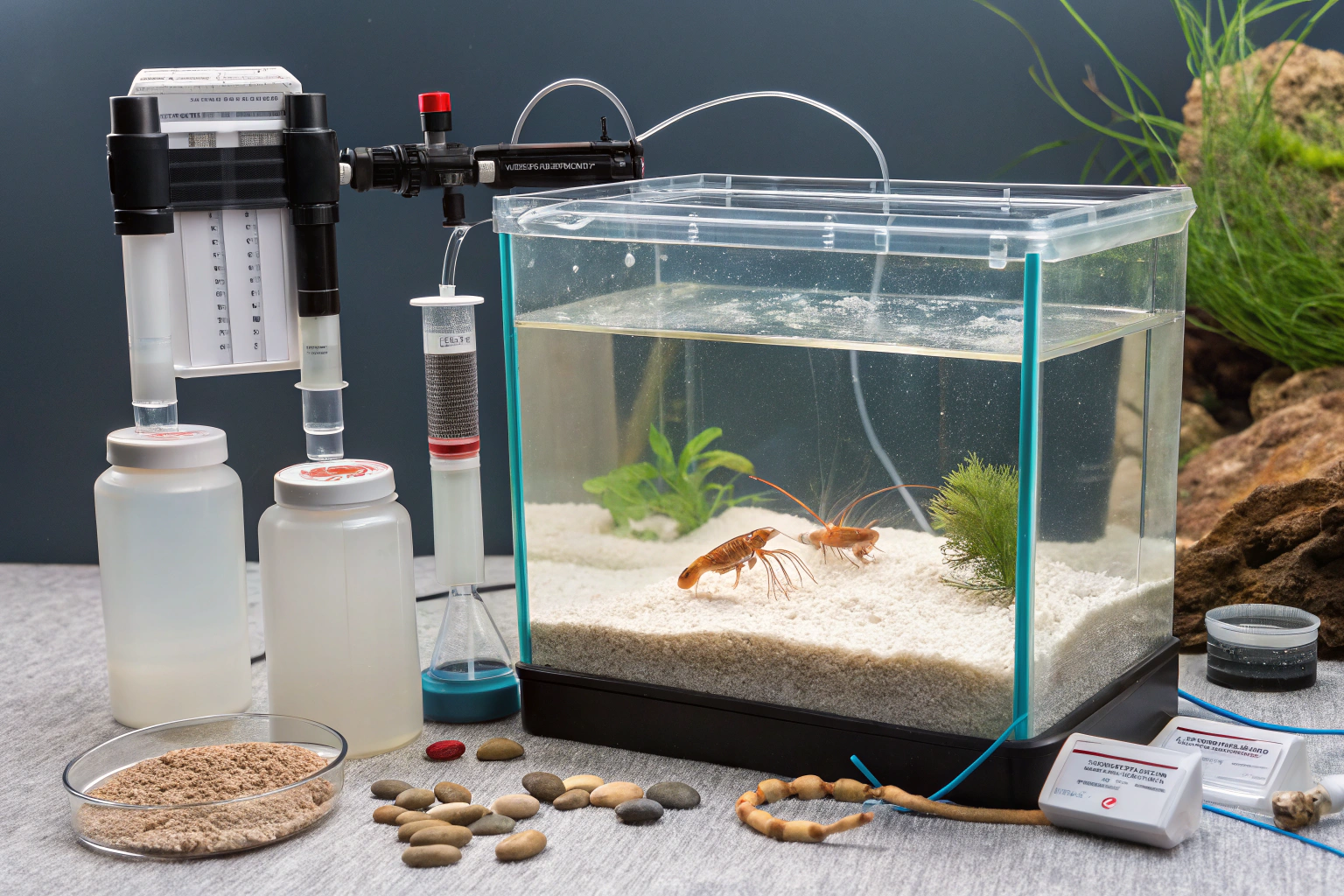
Common Feeding Mistakes to Avoid
Even with the best intentions, aquarists sometimes make feeding errors that can impact cherry barb health. Understanding common aquarium fish feeding mistakes can help you avoid these pitfalls:
Overfeeding Issues
Overfeeding brine shrimp or any food can lead to:
- Poor water quality from uneaten food decomposition
- Obesity and reduced lifespan
- Increased aggression during feeding times
- Higher bioload and stress on filtration systems
Inadequate Diet Variety
Feeding only brine shrimp, while nutritious, can cause:
- Nutritional deficiencies over time
- Reduced natural foraging behavior
- Potential digestive issues
- Loss of vibrant coloration
Setting Up a Brine Shrimp Culture
For dedicated cherry barb enthusiasts, culturing brine shrimp at home provides a continuous supply of fresh, nutritious food. Here’s a basic setup guide, and you can find more detailed instructions in our complete brine shrimp hatching guide:
Equipment Needed
- 2-liter bottles or small aquarium tanks
- Air pump and airline tubing
- Non-iodized salt
- Brine shrimp eggs (cysts)
- Fine mesh net for harvesting
Culture Process
- Mix saltwater solution (1-2 tablespoons salt per liter)
- Add brine shrimp eggs and maintain aeration
- Keep temperature around 80-82°F (27-28°C)
- Harvest newly hatched nauplii after 24-48 hours
- Rinse in fresh water before feeding to fish
Water Quality Considerations
When feeding brine shrimp to cherry barbs, monitor water parameters closely. Maintaining proper aquarium water quality is essential for fish health:
- Temperature: Maintain 72-79°F (22-26°C)
- pH: Keep between 6.0-8.0 for optimal digestion
- Ammonia/Nitrite: Should remain at 0 ppm
- Nitrate: Keep below 20 ppm with regular water changes
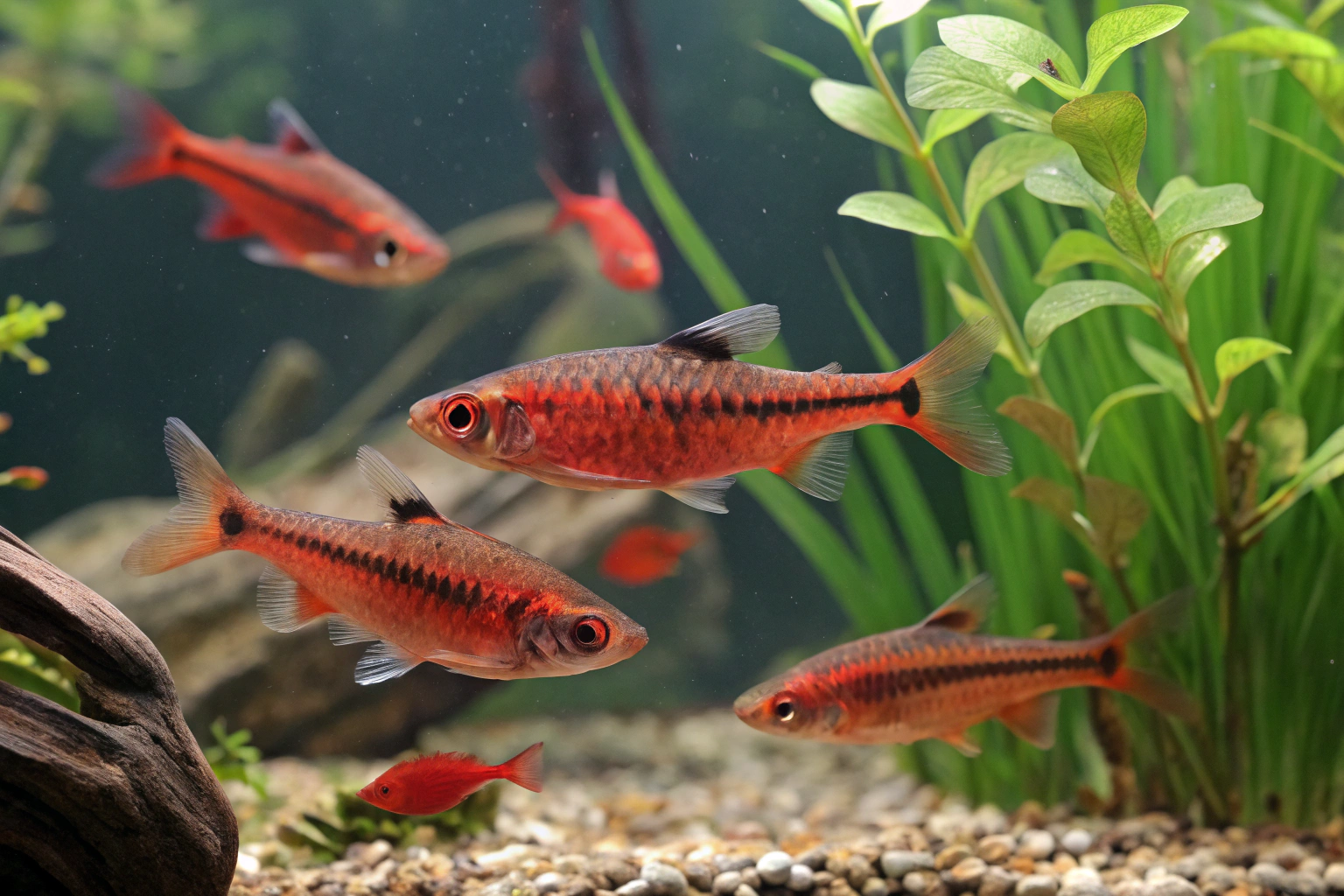
Breeding Cherry Barbs with Optimal Nutrition
Proper nutrition, including regular brine shrimp feeding, significantly improves cherry barb breeding success. Well-fed pairs show increased spawning frequency and produce healthier fry. For comprehensive breeding information, check our cherry barb breeding guide.
Pre-Breeding Conditioning
Before breeding attempts, condition adult cherry barbs with:
- Daily live or frozen brine shrimp for 2-3 weeks
- Varied high-protein diet including bloodworms
- Slightly elevated water temperature (78-80°F)
- Excellent water quality with frequent partial changes
Fry Nutrition
Newly hatched cherry barb fry can consume:
- Baby brine shrimp (nauplii) as first food
- Microscopic foods like infusoria initially
- Gradually transition to crushed flakes and micro pellets
- Multiple small feedings throughout the day
Seasonal Feeding Adjustments
Cherry barb feeding requirements may vary slightly with seasons and breeding cycles:
Spring/Summer (Breeding Season)
- Increase protein-rich foods like brine shrimp
- Feed smaller portions more frequently
- Focus on conditioning foods for breeding pairs
- Monitor for increased aggression during feeding
Fall/Winter (Rest Period)
- Slightly reduce feeding frequency
- Maintain variety but less emphasis on breeding foods
- Focus on maintaining health and coloration
- Prepare for next breeding season with proper nutrition
Troubleshooting Common Issues
Poor Coloration
If your cherry barbs show faded colors despite regular feeding:
- Increase carotenoid-rich foods like brine shrimp
- Check water quality parameters
- Ensure adequate lighting for 8-10 hours daily
- Consider stress factors in the aquarium
Learn more about enhancing fish coloration naturally through proper nutrition and care.
Reduced Appetite
When cherry barbs show decreased interest in food:
- Check water temperature and quality
- Observe for signs of disease or parasites
- Vary food types to stimulate interest
- Ensure proper tank mates and reduced stress
If appetite problems persist, consult our aquarium fish disease identification guide for additional troubleshooting steps.
Digestive Issues
Signs of overfeeding or poor digestion include:
- Bloated appearance after feeding
- Stringy or white feces
- Lethargy and reduced activity
- Food refusal or selective eating
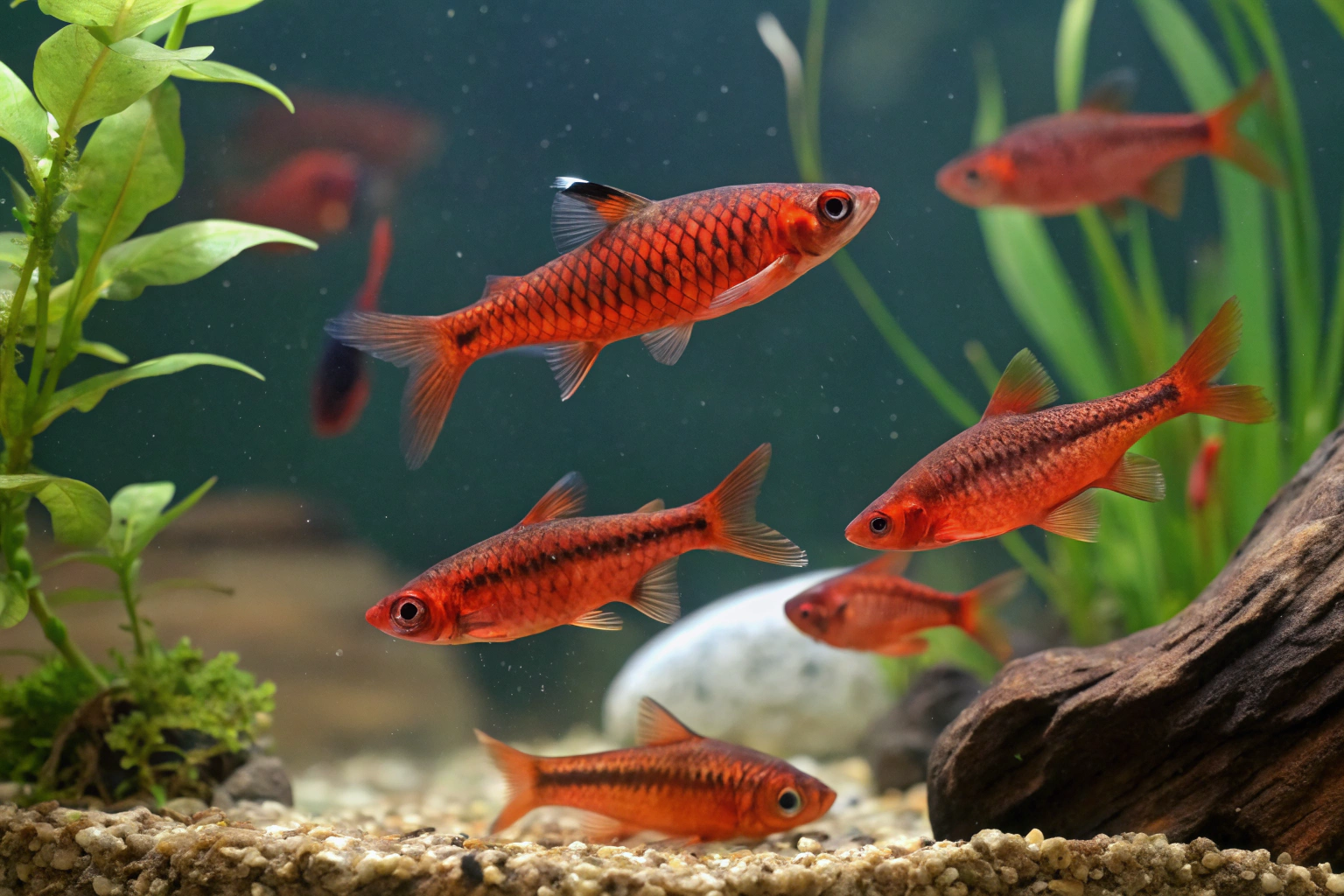
Conclusion: Maximizing Cherry Barb Health with Brine Shrimp
Cherry barbs absolutely can and should eat brine shrimp as part of a well-rounded diet. These nutritious crustaceans provide essential proteins, enhance coloration, and stimulate natural feeding behaviors that keep your fish healthy and vibrant.
The key to success lies in variety and moderation. While brine shrimp are excellent, they should complement rather than replace a diverse diet including quality commercial foods, other live or frozen options, and appropriate vegetable matter.
By incorporating brine shrimp into your cherry barb feeding routine 2-3 times per week, you’ll likely notice improved coloration, increased activity, and better overall health in your fish. Whether you choose live, frozen, or home-cultured brine shrimp, your cherry barbs will thank you with their vibrant colors and lively behavior.
Remember that each aquarium is unique, and what works best may require some experimentation. Monitor your fish closely, maintain excellent water quality, and enjoy watching your cherry barbs thrive on their favorite treats.
For more information about cherry barb care, aquarium nutrition, and freshwater fish keeping, explore our comprehensive guides on tropical fish diets and feeding best practices. Don’t miss our complete freshwater aquarium setup guide for beginners.
